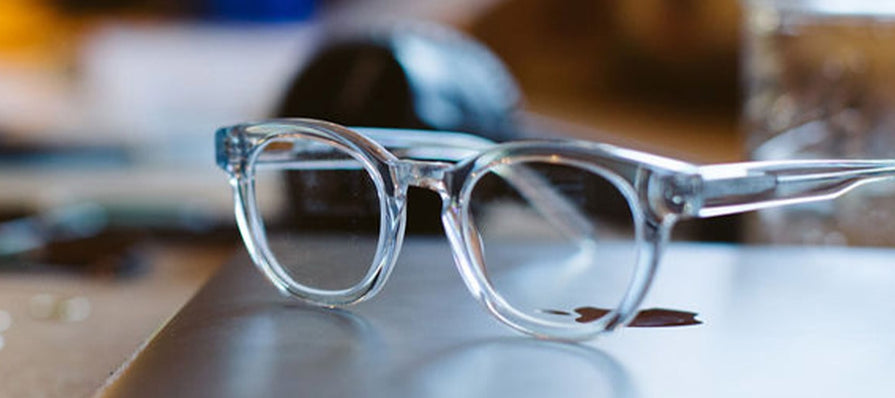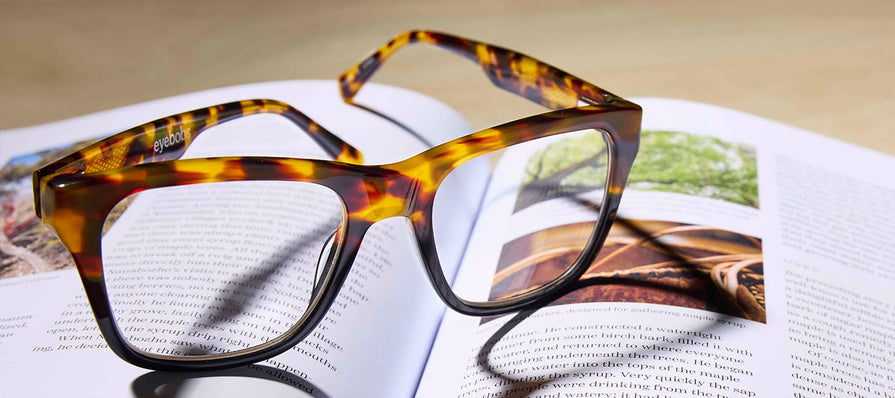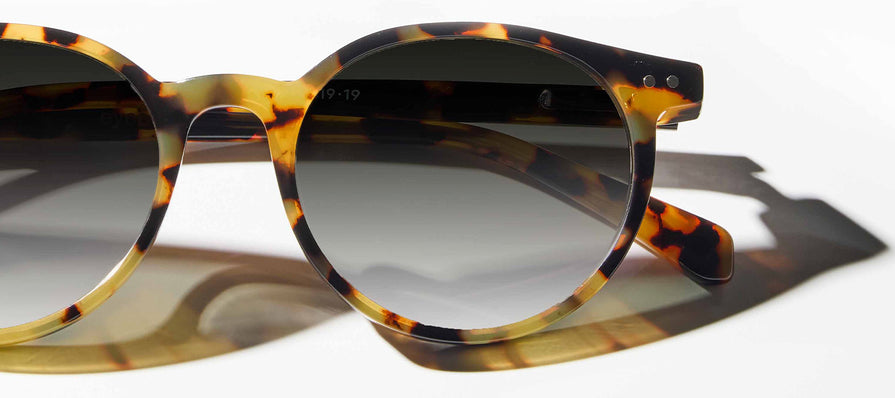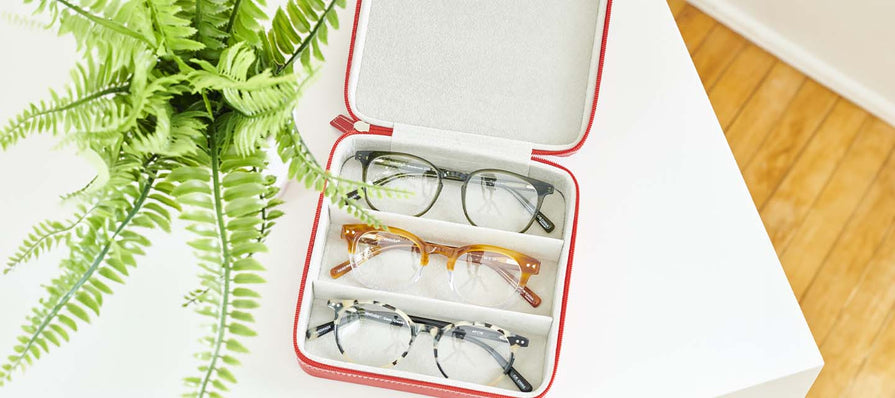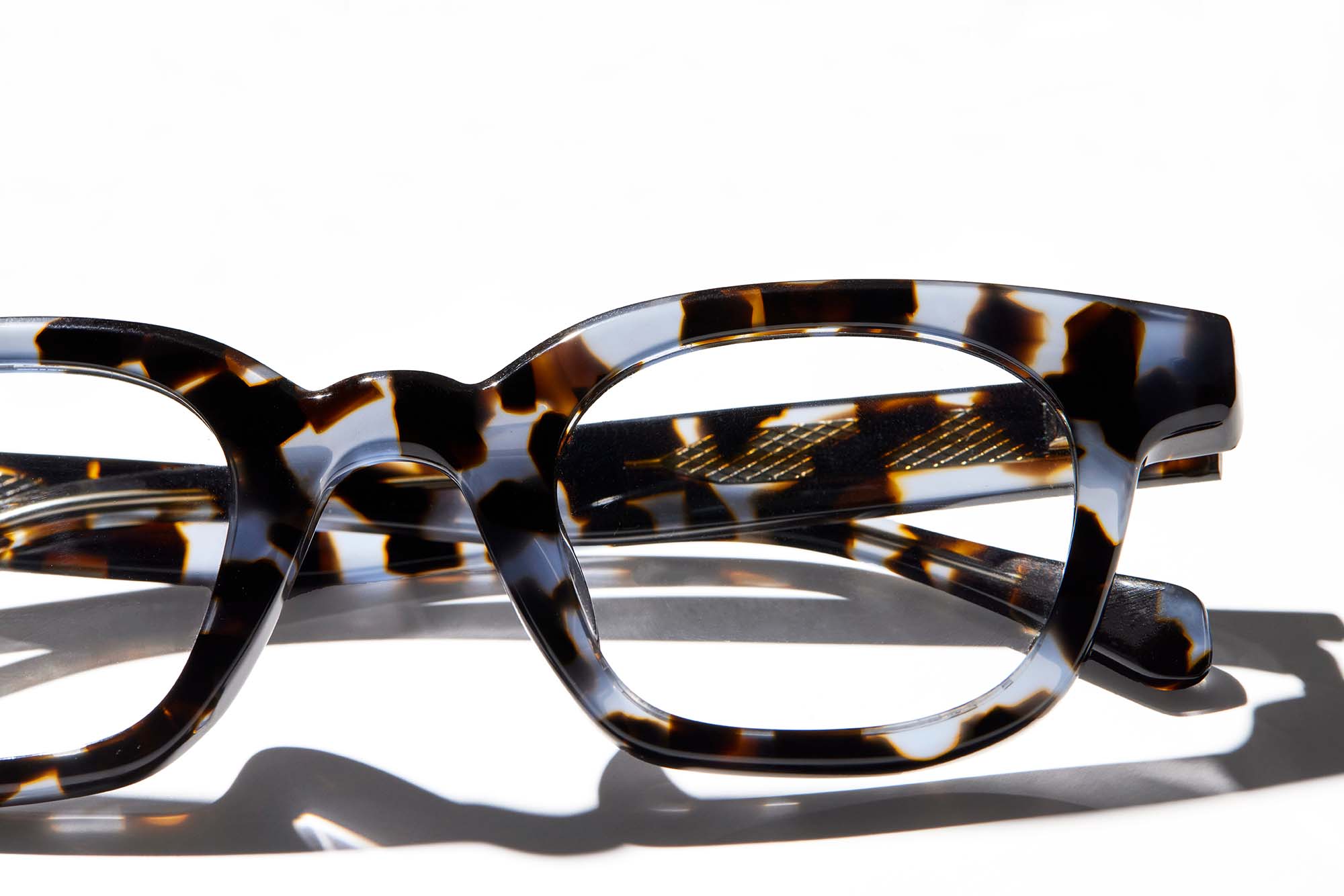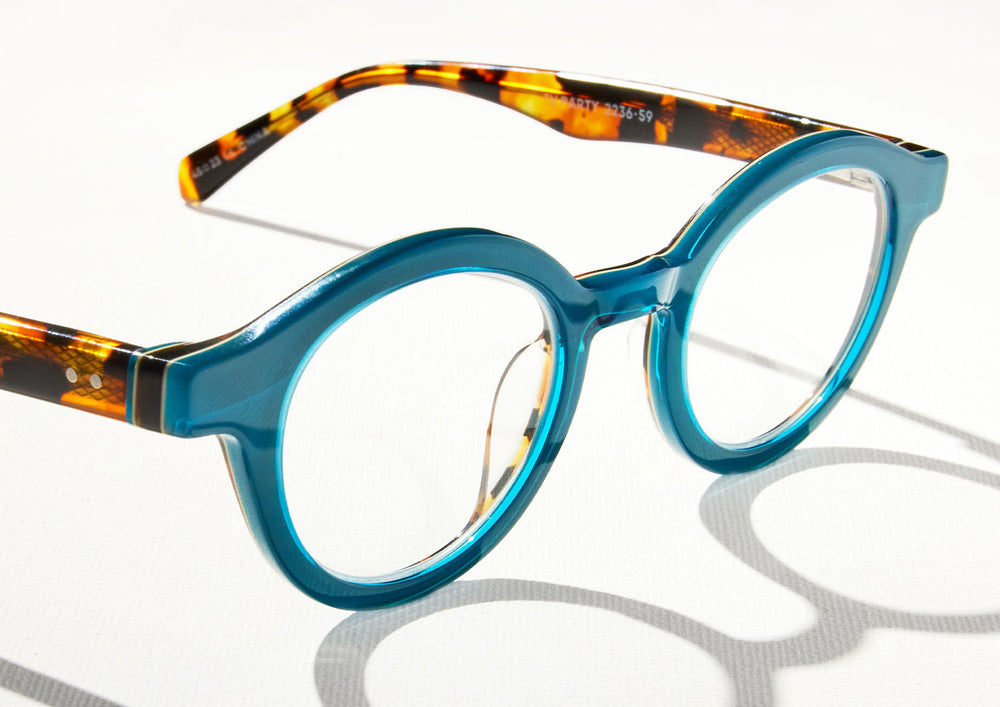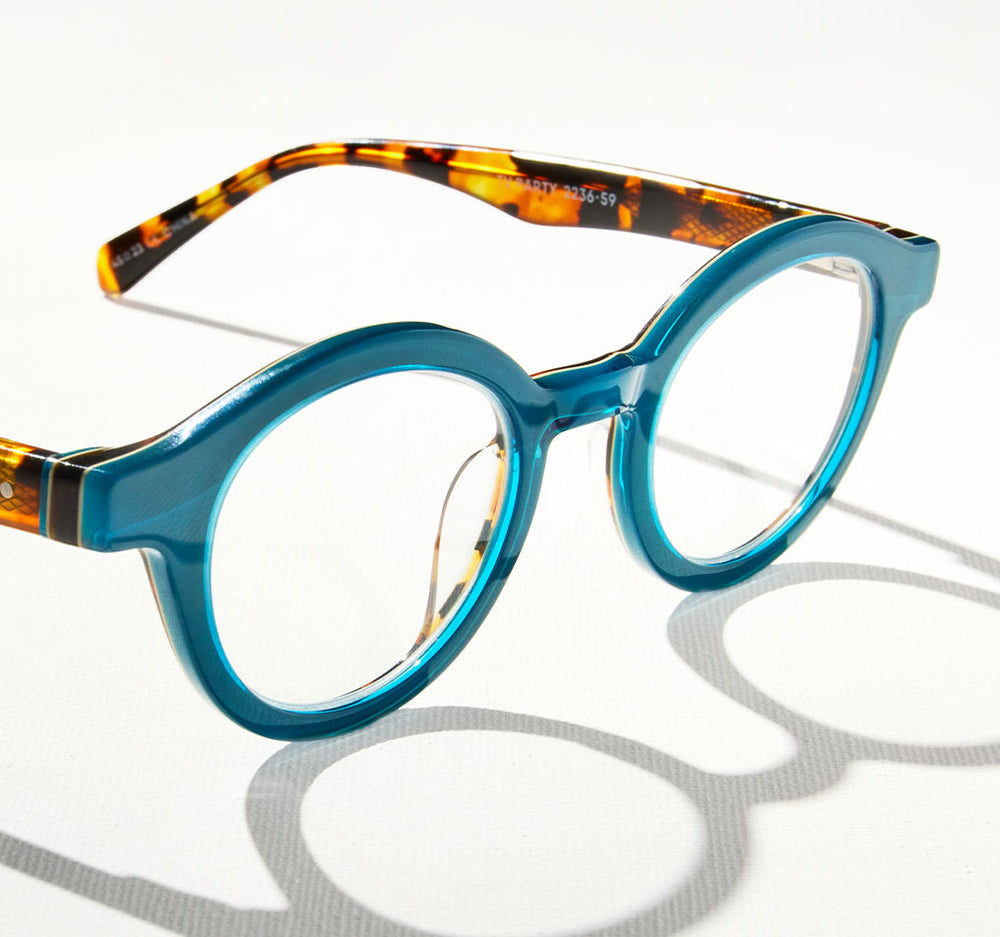There are so many different kinds of eyewear out there, not to mention lens types and frame materials, that it can be difficult to keep them all straight. Compound that with common eye-related jargon like “presbyopia” and “diopters” swirling around, and it makes perfect sense that first-time eyewear buyers in particular might find themselves in the weeds. Allow us to ease your spinning head (and your less-than-optimal eyesight) by giving you the skinny on one of the most common points of confusion for the intrepid spectacle researcher: reading glasses vs. prescription glasses.
Spoiler alert: if you’re using the umbrella term “prescription glasses” to describe any sort of corrective hardware, you’re way off base. The more you know, right?
Are reading glasses prescription?
The bottom line: full-lens reading glasses are not prescription glasses. Say it again for the people in the back! Prescription glasses require an optometrist’s RX, but you’ll find you can get reading glasses over the counter at your local CVS, Walmart, grocery store, or gas station. These will range from the cheapest of cheap plastics for less than $10 to slightly (but only slightly) less rickety pairs for around $30.
You’ve likely already guessed at our feelings regarding drugstore readers, so suffice it to say that we firmly believe your eyeballs are far too precious to be adorned by anything less than the finest quality reading glasses. At eyebobs, buying readers works similarly to heading to your local drugstore – you simply choose your reader strength, no RX required – but the readers themselves work (and look) a whole lot better. Mosey on over to our Reader Strength Test for more, and keep in mind that consulting your optometrist is always the most reliable path to crystal clear vision, prescription or no.

What are prescription reading glasses?
Full-lens reading glasses may not technically be prescription reading glasses, with the notable exception of uniquely high reader strengths, but many of their progressive counterparts are. For those who need a refresher, progressive lenses feature multiple focus areas: they host your reader strength on the bottom and your distance prescription up top, making them ideal for those who need multiple types of vision correction or simply are sick of the glasses-on, glasses-off game. The different focus areas blend into each other seamlessly, making the change – wait for it – progressive.
If most reading glasses are OTC (over the counter), does that mean that all reading glasses are basically the same?
Although they may be used for the same purpose, not all reading glasses are created equal. For one, comparing OTC drugstore readers to designer ones (hint, hint) is like comparing Fiats to Ferraris – both accomplish the same goal, but one does it more efficiently and with a whole lot more style to boot. Whereas drugstore readers tend to be made of cheap plastics, we use the finest Italian-designed acetate and high-quality stainless steel to craft our frames. That means they’re hardier, last longer, and infinitely more suited to posturing in the mirror. As if that weren’t enough, our lenses are made with durable, optical-quality CR-39 and polycarbonate lenses (read: the really good stuff). We’d say the difference between settling for a fair-weather frame that you’ll no doubt find crushed at the bottom of your purse within months and finding your spectacle soulmate is a pretty big one, wouldn’t you?
Moving on from material matters, reading glasses also differ in terms of their strength. Reader strength refers to the power of the lens’s magnification, and are measured in units called diopters. We offer readers starting at +1.00 as the lowest strength, increasing in increments of +0.25 up to +3.00 readers. We also offer strengths of +3.50 and +4.00 for those who require a little extra kick in their lens. The bottom line: we have strengths to suit a wide range of readers, which is far more than you can say for drugstore lenses. Check in with your eye care provider or head over to our Reader Strength Test to figure out the level of magnification you need.

Readers vs prescription glasses
In short, prescription reading glasses will be tailored to you and your specific vision needs, while regular readers take more of a one-size-fits-all approach. You can find full-lens readers anywhere from your local gas station to designer brands online. No matter your readers shopping locale of choice, you don’t need an optometrist’s RX to make a purchase – you just need to know your reader strength. Those who only need up-close vision correction or enjoy juggling multiple pairs of glasses (whatever floats your boat, we say) will want to opt for traditional readers. Please note: the word traditional does not apply to our array of colors and styles.
Prescription glasses, on the other hand, do require a prescription – go figure. Those who are nearsighted and/or require multiple types of vision correction will certainly need to make a date with their optometrist. Oftentimes, someone using the phrase “prescription reading glasses” is referring to progressive glasses, which host both your reader strength and your distance prescription within the lens. These types of glasses are ideal for those with astigmatism, or the vast majority of folks who can’t keep track of more than one pair of frames, if that.
Do you need a prescription for glasses other than readers?
Wondering which of our frames can be acquired sans prescription? Wonder no more. As we’ve already established, our traditional full-lens readers only require you to know your reader strength. Our blue light glasses and sunglasses are also available for purchase without a prescription. And, of course, you can purchase any of our frames with no corrective measures at all if you long to be a glasses-wearer but are cursed with perfect vision. Expect other lens types to require a prescription.
We’ll say it one more time for the people in the back: prescription glasses require a doctor’s RX, while reading glasses only require you to know your reader strength, which you don’t technically need a doctor to approximate. Although, we would still highly recommend entrusting your eyes to the opinions of professionals – wearing the wrong prescription or reader strength is a headache waiting to happen, and you don’t need any more of those. If you still need a hand, we’re happy to provide one – email us at omfg@eyebobs.com or pop into the chat box on our website to catch up with us and clarify any lingering reader-related Qs. We can’t wait to hear from you!


